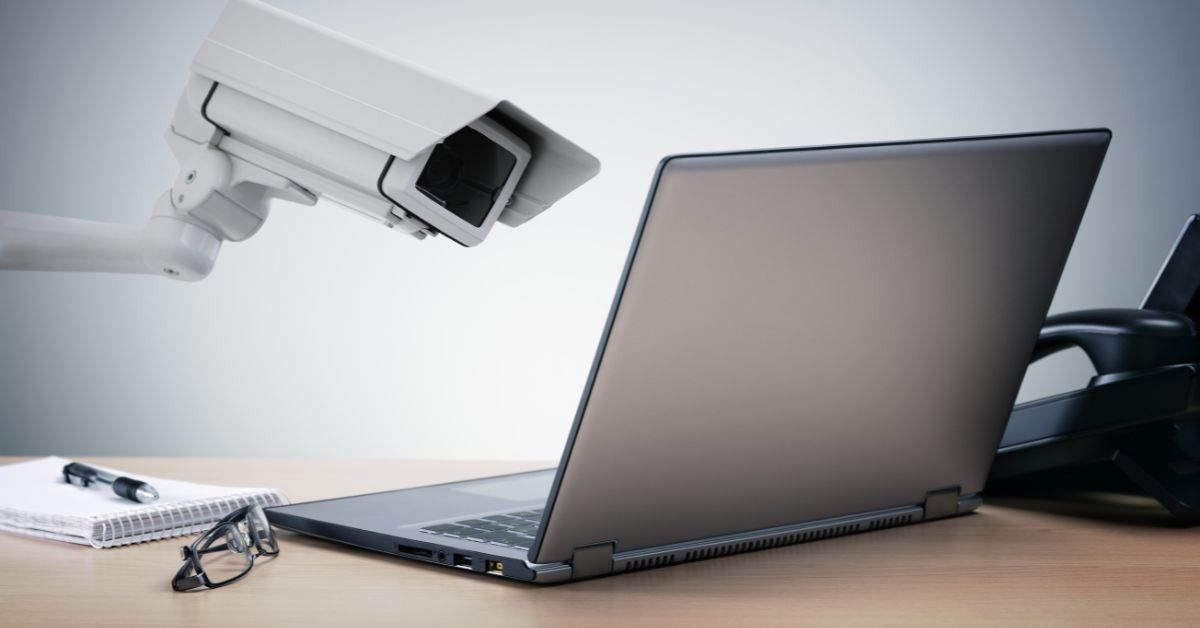It’s becoming increasingly common for employers to monitor employees in the workplace using surveillance tracking methods, including digital surveillance, video monitoring, GPS tracking, social media monitoring, and more. The purpose of these monitoring tools is to enhance security and increase productivity. However, monitoring employees can have more negative effects than benefits if employers don’t approach their methods with a human touch.
Let’s explore the different types of workplace surveillance tracking, the pros and cons, and possible alternatives.
Different Types of Surveillance Tracking in the Workplace
Workplace surveillance tracking uses technology to monitor employees while they work. These tools enhance security and productivity, and there are many different types:
- Electronic surveillance tracking or digital monitoring monitors email, internet usage, and computer activity.
- Video surveillance tracking uses cameras to monitor activity.
- Audio surveillance tracking utilizes microphones to monitor conversations.
- GPS tracking tracks employee location (often used by transportation and transit companies).
- Social media monitoring to check employee activity on social platforms.
- Biometric tracking uses facial recognition or fingerprints to track employee attendance and activity.
What are the Pros and Cons of Workplace Surveillance Tracking?
As mentioned before, workplace surveillance tracking can provide companies with many benefits, such as:
- Increased productivity
- Enhanced security
- Reduction of theft and other misconduct
However, the cons of using such technology can outweigh the pros if used incorrectly. Such negative outlooks for employees include:
- Invasion of privacy
- Decreased job satisfaction
- Increased stress
- Potential for abuse by employers
Best Practices for Surveillance Tracking in the Workplace
To avoid having the negative effects of surveillance tracking outweigh the benefits, employers need to implement some best practices and approach the use of such tools with a human approach. Here are a few best practices to keep in mind.
Transparency and Communication: Discuss the importance of transparency and communication between employers and employees. Ensure employees understand how they are being monitored, the rules and regulations surrounding monitoring practices, and how they can communicate concerns to leadership.
Clear Policies and Procedures: Establish clear policies and procedures for surveillance tracking in the workplace that are transparent to employees so they know exactly how and when they are being monitored and their rights as employees.
Regular Evaluations: Reviewing the effectiveness and necessity of surveillance tracking regularly can help ensure an organization isn’t using this technology in unnecessary ways. It will be beneficial to discuss the effectiveness with security staff and other employees.
Alternatives to Workplace Surveillance in the Workplace
According to an article by Inc.com, workplace surveillance is not the best answer for increasing productivity in the workplace. While this technology may be used effectively for security purposes, using it to keep an eye on employees can be detrimental to employee wellness and the overall health of the organization. Here are some tips from the article and other resources for increasing productivity without using surveillance technology.
Incorporate Regular Check-Ins: Creating a “check-in routine” can help build good communication and two-way trust between employees and employers. This can include group check-ins or one-on-one discussions about what works in the workplace and what isn’t. This allows employees and employers to address issues at work that might be affecting productivity without the use of surveillance technology.
Be Collaborative When Setting Goals: Leaders should establish clear goals for employees through collaborative efforts. Provide channels for employees to communicate with leadership about how they feel about their progress toward goals and the expectations placed upon them.
Focus on Employee Wellness: Many business leaders agree that communication and collaboration are key in increasing productivity, and recent studies place emphasis on an increased focus on employee wellness as well. Among other things, focusing on employee wellness means taking into consideration the negative effects things like workplace surveillance may be having on employees and adjusting policies to ensure there isn’t any unnecessary stress being placed on workers.
Tools to Consider Using Before Implementing Workplace Surveillance Technology
Workplace surveillance technology can help businesses improve their security and employee productivity when used correctly. However, employee surveillance is not going to be the best solution for every organization, and many may want to consider alternatives before putting undue stress on employees. Employers need to consider the pros and cons and work to improve communication with employees before implementing surveillance technology.
One way employers can improve communication and enhance security in the workplace is with online payroll and human resources software solutions. These tools help employers communicate with employees while also providing a more secure way of managing payroll. For example, Proliant offers a suite of solutions that are tailored to the businesses they serve. These solutions provide tools for managers and employees to communicate, collaborate, monitor, and manage time, all within a system that streamlines business practices and guarantees secure employee data.
Learn more about how Proliant can help improve your business processes and enhance the employee experience by scheduling a consultation.




No Comments Yet
Let us know what you think